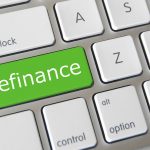The sustainability of the growth in property prices and its implications on overall housing affordability is now being questioned

Some segments of the population are overstretching themselves when buying a new private property, which may no longer be that pot of gold that Singaporeans can solely rely on as their retirement nest egg, DBS’ latest “NAV Financial Health Series” research report has found.
It is also expected that housing affordability will worsen once homeowners trade up to a bigger home, likely necessitated by work-from-home arrangements as a result of the pandemic, and price-to-income ratios will eventually hit multi-year highs.
Property is a major contributor to household wealth, accounting for nearly 42% of total household assets in Singapore. Buoyed by strong economic growth in the earlier years, it worked well as a wealth accumulation strategy for older generations, as many homeowners had seen the value of their homes and property investments appreciate by multiple folds.
But it might no longer be sufficient, nor cost-effective, for today’s younger Singaporeans to solely depend on the returns of property investments to accumulate wealth for their golden years.
Several factors, such as property prices potentially outpacing one’s salary growth and evolving demographics, now weigh on home price appreciation.
Derek Tan, Head of Property Research, DBS Bank said: “By studying publicly available data, as well as aggregated and anonymised data insights from 1.2 million of our retail customers, we were able to diagnose that one’s ability to retire well would be negatively impacted if one adheres to the adage of property being a ‘golden nest egg’ given shifting demographics. Instead, we found several investment alternatives which have comparable, if not superior, returns that a retail investor can consider as part of maintaining a well-diversified investment portfolio.”
Mr Paul Ho, chief officer at iCompareLoan, said: “people concerned about housing affordability should speak to experts on property, loan and investments to make well-informed investing decisions.”
Here are key takeaways from the third report published by DBS in this series:
1. Relying on property alone may not be enough to retire well
The outlook of the property market remains uncertain, given the more modest property price growth in recent decades. While there has been a recent upswing in buyer sentiment – driven by upgraders –, the bank remains watchful of the pace of increase in the private property price index (PPI) and HDB resale index, both of which rose approximately 7% and 11% respectively over the past year despite the pandemic and the government’s continued hawkish stance on the property market.
2. Impact of changing demographics and the overall demand for homes
For consumers who are considering a second property as an investment, it is important to consider Singapore’s changing demographics amid an ageing population and tighter manpower policies. These factors may weigh on the longer-term demand and expected rental yield for residential properties. One should also keep in mind potential prudential measures that could be further implemented by the Singapore government, given their hawkish stance as property prices continue to climb, and as part of efforts to mitigate the “lottery effect” of public housing in mature townships.
3. Increase in property prices, which outpaces salary growth, is a potential concern
While the property market has shown a high degree of resilience over the past few years, the sustainability of the growth in property prices and its implications on overall housing affordability is now being questioned. Data has shown the pace of increase in property prices currently outpace that of gross domestic product (GDP) and salary growth, which raises the risk of froth building up in the property market.
The bank has found evidence of stretched affordability ratios in recent years, with upgraders buying smaller homes while paying higher prices on a per square foot basis. However, there may be a shift in preference towards bigger homes, given work-from-home arrangements necessitated by the Covid-19 pandemic, which would further stretch affordability. This is commensurate with the observation that more households are turning to dual incomes in order to achieve greater financial flexibility.
4. Specific groups of customers are found to face challenges in housing affordability and retirement planning
According to DBS data, housing affordability tends to be the most stretched (based on median mortgage-to-income ratios) among those with income up to SGD 5,999/month, and in the 30-49 age group. Customers in this age group were also found to exhibit the lowest propensity to invest.
- Private property owners in the 30-39 and 40-49 age groups were found to have higher mortgage-to-income ratios at an average of 0.27 (27%) (ranging between 19-46%) and 0.26 (26%) (ranging between 19-39%) respectively.
- These age groups are also most likely to be experiencing a peak in their financial commitments, given priorities such as having to care for their children and provide for their elderly parents at the same time, or upgrading to a new and bigger home etc.
With mortgage payments typically making up the largest component of a household’s monthly recurring expense, the ability for these groups of customers to plan for their retirement is negatively impacted.
5. High acquisition costs make property a less attractive investment asset class
Rather than putting all eggs in one basket (i.e., thinking that one’s primary property is equivalent to a retirement ticket), consumers should consider growing their net worth through a diversified investment portfolio.
While property may remain a core part of their portfolios, with a caveat that the power of leverage serves as a double-edged sword for property investments, the inclusion of other asset classes – for example, equities, real estate investment trusts (REITs), and more – will form a more balanced investment strategy that can go a longer way to achieving financial resilience.
- After studying the total returns of different asset classes since the first quarter of 2009, S&P500 and S-REITs were found to have exhibited the highest growth in invested capital, followed by property assets. More specifically, for every SGD 100 invested, an investor will stand to receive returns of approximately SGD 635 from the S&P500 Index and SGD 486 from S-REITs, versus SGD 399 and SGD 339 should the same amount be invested in a first private property or HDB flat instead.
- Of the different asset classes, the choice to invest in a second private property performed the weakest, with a return of a mere SGD 209 per SGD 100 invested, which significantly falls short of the return on equities. Contrary to popular belief, returns from a second private property were relatively weaker due to lower loan-to-value (LTV) ratio and higher acquisition costs (e.g., Additional Buyer’s Stamp Duty (ABSD)).
Homeowners worried about housing affordability should also be cautious about “gearing up” – in other words, to employ leverage – in a bid to bump up their investment property returns, as additional leverage would expose them to greater mortgage obligations and financing risks given the interest rate environment is not within their control.
“Holistic financial planning is more than just an investing idea or strategy,” said Lorna Tan, Head of Financial Planning Literacy, DBS Bank. “While consumers can regard their primary property as a retirement asset and a component of a holistic financial plan, they should keep in mind that diversification is key and the right mix of assets can help to maximise the risk-reward from their investments.”
“Our multi-year journey to democratise access to wealth management services has allowed our customers to invest in non-property asset classes more conveniently and in a cost-effective manner through our suite of digital investing solutions, where we help them start earlier with less.”
Lorna Tan






